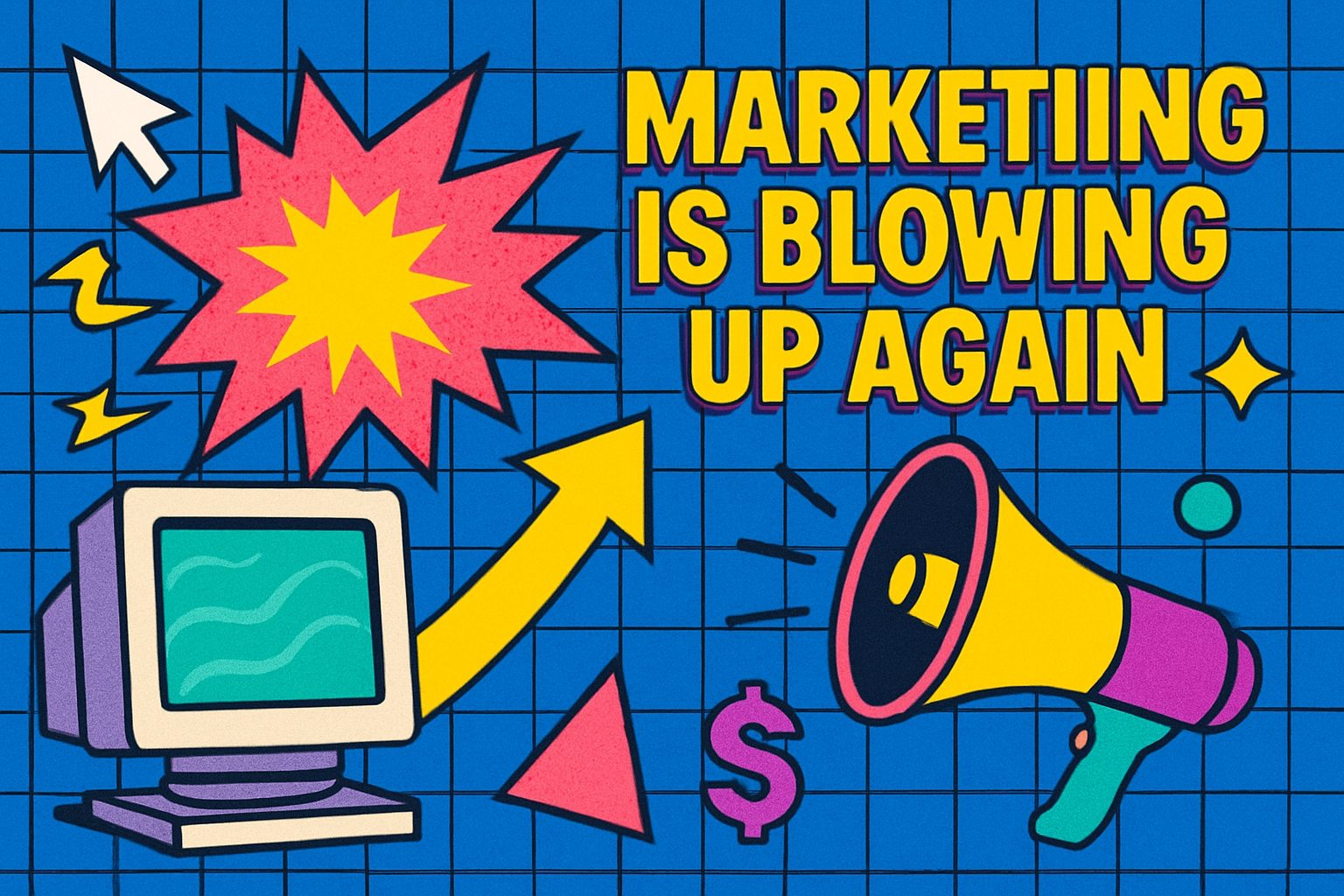
90s Visuals Marketing Is Blowing Up Again in Today’s Advertising
The 90s are back—not just in fashion and music but also in digital marketing. Brands across industries are embracing retro visuals, VHS textures, analog imperfections, and nostalgic color palettes. Consumers—especially Gen Z and younger millennials—are responding with surprising enthusiasm. This revival of 90s visuals marketing isn’t random; it reflects a deeper shift in how audiences want to connect with content today.
In an era dominated by highly polished, algorithm-driven feeds, audiences crave authenticity and emotional resonance. Retro aesthetics provide a sense of comfort and familiarity, standing out amidst perfectly produced modern campaigns. Consequently, brands are using 90s visuals strategically to capture attention, foster connection, and differentiate themselves in competitive digital marketing landscapes.
The Emotional Pull of 90s Nostalgia
The 90s didn’t just look different—they felt different. That emotional tone is exactly what brands are tapping into now. As digital environments get more polished and algorithm-driven, people are craving something raw, imperfect, and familiar.
Why nostalgia hits so hard:
- Memory cues activate emotion: Grainy filters and vintage typography instantly trigger a sense of comfort and familiarity.
- Simplicity feels refreshing: Retro visuals cut through modern digital clutter, offering a break from over-produced content.
- Cultural references build connection: Old-school tech, childhood toys, and TV-era vibes help brands spark instant recognition.
- Authenticity stands out: The slight messiness of 90s aesthetics feels real, human, and unfiltered.
- Generational overlap boosts reach: Younger audiences find the aesthetic cool; older audiences feel the nostalgia.
In digital marketing, this emotional resonance can translate to higher engagement, longer watch times, and stronger brand recall.
Why Brands Are Recreating the 90s Look
The 90s aesthetic isn’t just a trend—it’s becoming a strategic tool in digital marketing. Brands use it to differentiate themselves in a saturated online ecosystem. Moreover, platforms like TikTok and Instagram reward content that feels organic and less “ad-like.”
Reasons brands are reviving the style:
- Retro stands out in fast feeds: A VHS-style clip or pixelated graphic instantly breaks scrolling patterns.
- Low-fi looks feel trustworthy: Imperfections make content seem less scripted and more genuine.
- Pop culture influence keeps rising: Music, fashion, and TV references from the 90s dominate today’s remix-driven culture.
- Cross-platform appeal grows: The aesthetic works equally well in ads, creator collaborations, UGC, and brand storytelling.
- Contrast creates impact: Pairing nostalgic visuals with modern messaging grabs attention fast.
How to Use 90s Visuals Effectively
Using the 90s look requires intention. When done well, it enhances brand personality and creates emotional relevance. When overused, it can feel like a gimmick. The key is balancing retro style with modern execution in digital marketing campaigns.
Ways to apply the aesthetic without overdoing it:
- Blend old and new: Combine VHS textures with clean typography to keep content readable and fresh.
- Use iconic color palettes: Teal-and-purple gradients, neon accents, and pastel tones instantly signal the era.
- Focus on storytelling: Let the visuals support a narrative instead of relying on them alone.
- Add subtle retro elements: Stickers, doodles, cassette graphics, and film overlays work well in moderation.
- Match it to your audience: Ensure the retro feel fits your brand identity and resonates with your target demographic.
Revival of 90s Visuals Marketing
The 90s revival isn’t only about aesthetics—it reflects a growing desire for authenticity, emotion, and storytelling in an overwhelming digital landscape. As audiences tire of glossy perfection, retro content feels warm, relatable, and human.
Brands that use 90s visuals with intention in digital marketing can stand out, tap into nostalgia, and create deeper emotional impact without relying on heavy production. This trend isn’t fading anytime soon; in fact, it may shape an entirely new era of creative expression.
Ready to make AI data-driven decisions for your brand?
Creatives can help!
Our team of AI-powered digital marketing experts can guide you in harnessing the power of data to achieve your marketing goals.
Schedule a consultation to learn how our AI-powered solutions can drive growth.

